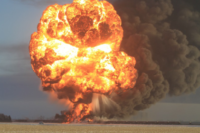As the U.S. moves to replace some of its aging passenger train fleet with high-speed trains that can travel up to 220 miles per hour, the Federal Railroad Administration (FRA) is moving to update safety standards for passenger trains in order to account for the speedy newcomers.
The proposed updates would establish a new category of passenger equipment, Tier III, for trains traveling up to 220 mph. The updates would offer an alternative method for evaluating how well passengers and crews are protected in an accident, often called crashworthiness. The public, railroad industry, railroad labor, manufacturers and other stakeholders will have an opportunity to provide feedback and comment on the proposed rule during the next 60 days.
In addition to measuring a train’s crashworthiness based on whether it meets current prescriptive strength standards, the proposed changes would allow a train’s crashworthiness to be evaluated based on it meeting an equivalent level of safety achieved through crash energy management technology or other innovative engineering methods.
“As several regions of the United States build faster passenger rail service, the trains on those tracks must keep passengers safe,” said U.S. Transportation Secretary Anthony Foxx. “To do that, we want to allow manufacturers to innovate and achieve all-new levels of safety. These proposed changes put us on track to do just that.”
Although Tier III trains will be required to have exclusive track to operate at speeds above 125 mph, the new standards will allow Tier III trains to safely share track with current Tier I and Tier II commuter, intercity, and Acela trains. Compatibility between equipment types is a key strategy to allow trains to share existing corridors to reach downtown stations.
The proposed updates represent nearly a decade of work by FRA’s passenger rail division. They can be found at http://www.fra.dot.gov/eLib/details/L18433#p1_z5_gD.



